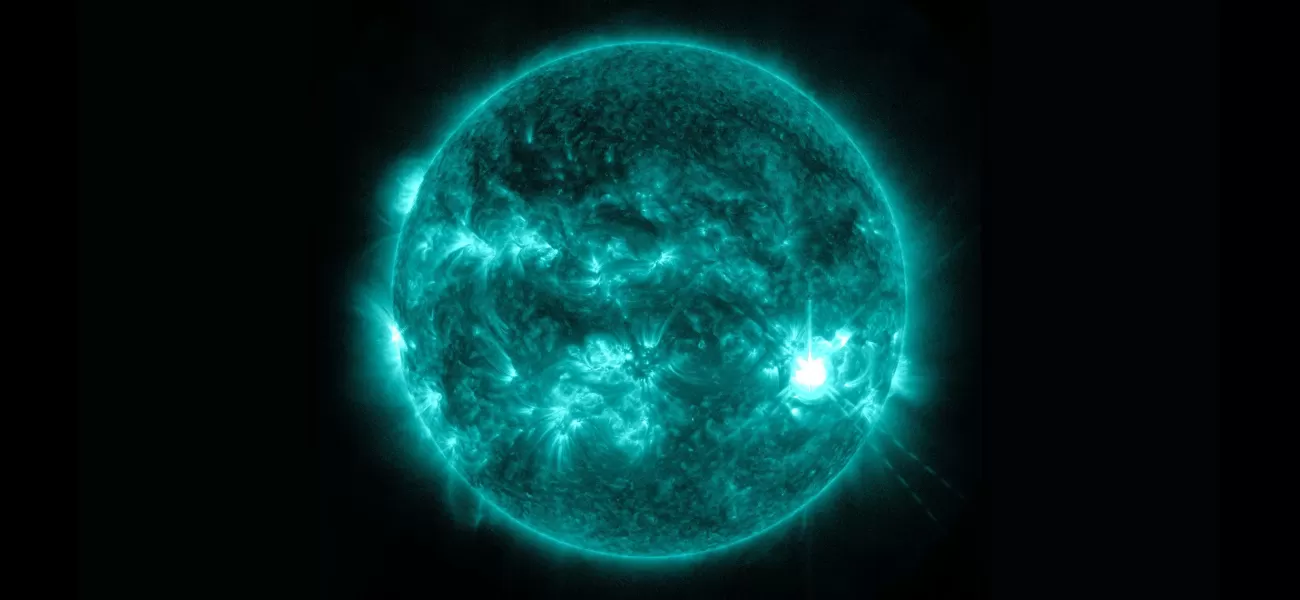The planet is at risk of being affected by intense solar flares, which could lead to significant disruptions.
Aviation and satellite communication can be affected.
July 18th 2024.

On Tuesday, NASA captured a powerful flare emanating from the Sun's surface. The intensity of the flare was so strong that it caused radio blackouts across the Earth. Even though there is a 65% chance of this happening again, the impact could still be felt in aviation and satellite communication. In fact, reports have already come in about blackouts affecting parts of the Pacific Ocean, according to an alert from the National Oceanic and Atmospheric Administration.
But this is not an isolated incident. Scientists have been tracking other radio blackouts caused by solar flares in various parts of the world over the past few days. And according to NASA, more solar flares are expected in the coming weeks.
For those who may not be familiar, a solar flare occurs when the Sun's atmosphere, also known as a sunspot, emits electromagnetic radiation. This radiation is then blasted away from the Sun's surface and depending on its source, can be directed towards Earth. Scientists classify solar flares based on their intensity, with X being the most powerful, followed by M and C, and B being the weakest.
It's the X and M solar flares that have the capability to disrupt communication on Earth. This is because they arrive with such force that they electrically charge the upper atmosphere. Dean Pesnell, project scientist at NASA, explained that during this time, the number of sunspots increases and they become larger in size. However, as the sunspot AR3738 rotates out of view, the Sun is expected to calm down for a few days to a week.
AR3738 is a sunspot with a large, dark region of strong magnetic fields, which is responsible for the recent strong solar flares. And all of this is happening because the Sun is currently in an 11-year cycle where solar activity is at its peak. Although AR3738 is moving away from Earth's view, it emitted an X flare on Tuesday that caused a radio blackout over Europe, Africa, parts of North and South America, and the Atlantic Ocean. Following this, weaker M and C flares have also been observed.
These flares have triggered radio blackouts in other parts of the world, such as the Pacific Ocean, Hawaii, and northern India. And even after this week, we can expect to see more solar flares until 2025. So, it's important to stay informed and prepared for any potential disruptions caused by these powerful solar events.
But this is not an isolated incident. Scientists have been tracking other radio blackouts caused by solar flares in various parts of the world over the past few days. And according to NASA, more solar flares are expected in the coming weeks.
For those who may not be familiar, a solar flare occurs when the Sun's atmosphere, also known as a sunspot, emits electromagnetic radiation. This radiation is then blasted away from the Sun's surface and depending on its source, can be directed towards Earth. Scientists classify solar flares based on their intensity, with X being the most powerful, followed by M and C, and B being the weakest.
It's the X and M solar flares that have the capability to disrupt communication on Earth. This is because they arrive with such force that they electrically charge the upper atmosphere. Dean Pesnell, project scientist at NASA, explained that during this time, the number of sunspots increases and they become larger in size. However, as the sunspot AR3738 rotates out of view, the Sun is expected to calm down for a few days to a week.
AR3738 is a sunspot with a large, dark region of strong magnetic fields, which is responsible for the recent strong solar flares. And all of this is happening because the Sun is currently in an 11-year cycle where solar activity is at its peak. Although AR3738 is moving away from Earth's view, it emitted an X flare on Tuesday that caused a radio blackout over Europe, Africa, parts of North and South America, and the Atlantic Ocean. Following this, weaker M and C flares have also been observed.
These flares have triggered radio blackouts in other parts of the world, such as the Pacific Ocean, Hawaii, and northern India. And even after this week, we can expect to see more solar flares until 2025. So, it's important to stay informed and prepared for any potential disruptions caused by these powerful solar events.
[This article has been trending online recently and has been generated with AI. Your feed is customized.]
[Generative AI is experimental.]
0
0
Submit Comment





